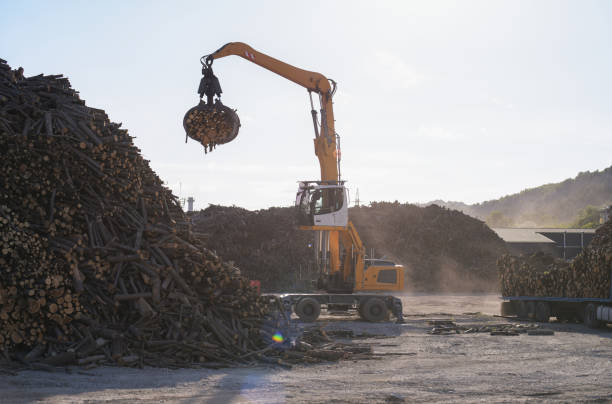In the quest for sustainable energy solutions, biomass pellets stand out as a beacon of renewable potential. Made from compressed organic matter, primarily wood chips and sawdust, these pellets are a clean-burning alternative to fossil fuels. The production of biomass pellets not only offers a use for wood waste but also contributes to energy security and environmental conservation.

The Raw Material: Wood Chips and Sawdust
The journey of biomass pellet production begins with the collection of wood waste. Sawmills, woodworking factories, and timber harvest operations generate significant amounts of wood chips and sawdust, which are the primary raw materials for pellet production. Instead of being discarded, these by-products are gathered and prepared for the next stage of processing.
The Pelletizing Process
The transformation of wood waste into biomass pellets involves several key steps:
1. Size Reduction: Wood chips and sawdust are first ground into a fine consistency using hammer mills.
2. Drying: The ground material is then dried to reduce moisture content, which is crucial for efficient pelletization.
3. Pellet Formation: The dried biomass is fed into a pellet mill, where it is pressed through die holes under high pressure, forming dense pellets.
4. Cooling and Packaging: The hot pellets are cooled and then packaged for storage or transport.
Technological Innovations
Advancements in pelletizing technology have streamlined the production process, making it more efficient and cost-effective. Modern pellet mills are equipped with sophisticated controls to optimize the pelletizing conditions, ensuring consistent quality and high output rates.
Environmental Impact
Biomass pellets are lauded for their environmental benefits. They are carbon-neutral, meaning the CO2 released during combustion is offset by the amount absorbed by the trees during growth. Moreover, utilizing wood waste helps reduce landfill use and forest fires.
Market Prospects
The demand for biomass pellets is on the rise, driven by the global push for cleaner energy sources. They are used for residential heating, industrial energy, and even as a substitute for coal in power plants. The market is set to expand further as more countries adopt green energy policies.
Conclusion
The production of biomass pellets from wood chips and sawdust is a shining example of how industry can align with environmental stewardship. As the world pivots towards renewable energy, the biomass pellet industry is poised to play a pivotal role in shaping a sustainable future.